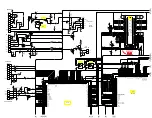
1
Connectivity - Appendix D
KIP IPS - Technical Detail
Version 1.1
Introduction
The following document contains technical detail and description related to the
networkability of KIP printers, functionality of KIP printers in various network
typologies, and concepts relating to client-server printing architecture. This
document is intended for an audience familiar with core networking fundamentals
and concepts, and an understanding of general network typologies and practices.
KIP Printers are considered to be
hardware network-connected devices
in the
sense that participation within a given network typology requires a physical RJ-45
type connection in order to communicate with other network devices such as
computer workstations, dedicated-servers, switching equipment, hubs, bridges,
office printers, routers, and a variety of other network capable hardware.
KIP Printers are TCP/IP devices. TCP/IP is short for
T
ransmission
C
ontrol
P
rotocol /
I
nternet
P
rotocol. TCP/IP is a widely adopted networking protocol
standard that is common place in many environments requiring network capable
equipment, and network connectivity to company intranets, the larger internet, e-
mail, wireless communications, shared printing devices, IP-telephony, and many
other applications
Many other networking protocols exist at the same OSI level as TCP/IP (.e.
IPX/SPX AppleTalk, NetBEUI) and at lower levels of the OSI model (BGP, RIP,
OSPF, IGRP / EIGRP). TCP/IP can be traced to it’s origin in 1969 to a research
project funded by the United States Defense Advanced Research Projects
Agency (DARPA). In 1983 TCP/IP was adopted as a standard by the DARPA as
the primary vehicle for network connected devices, or hosts, and was considered
a requirement for connected device implementation. Many companies have now
built corporate TCP/IP networks that have grown to a point at which it could
almost be considered a mainstream consumer technology.
TCP/IP has several different fundamental concepts and inner working that are
well beyond the scope of this document. An excellent resource of TCP/IP study
can be found at
http://www.faqs.org/rfcs/rfc1180.html
.
Содержание CX 8036
Страница 1: ...Instruction Handbook CX 8036 Large Format System ...
Страница 68: ...Section 2 Copy Mode 2 28 ...
Страница 94: ...Section 4 Job Info Screen 4 8 ...
Страница 110: ...5 16 Section 5 Help Configuration d Select Printer Driver from List e Choose Keep existing Driver ...
Страница 111: ...5 17 Section 5 Help Configuration f Setup Queue name all Caps in English g It is not necessary to Share driver ...
Страница 138: ...Section 6 Windows Driver 6 22 ...
Страница 150: ...Section 7 AutoCAD HDI Driver 7 12 5 0 Custom Settings 1 2 7 3 8 4 9 10 6 5 ...
Страница 201: ...Section 8 Request 8 45 ...
Страница 206: ...Section 8 Request 8 50 ...
Страница 224: ...9 18 Section 9 KIP Print Net KIP PrintNet on Opera ...
Страница 228: ...9 22 Section 9 KIP Print Net ...
Страница 242: ...Section 11 Connectivity 11 8 ...
Страница 246: ... 4 ...
Страница 252: ...2 2 Select the Applications folder 3 Select the Utilities folder ...
Страница 253: ...3 4 Find the Printer Setup Utility 5 On the top menu bar select Printers and then Add a Printer ...
Страница 255: ...5 8 Select Add 9 The printer set up will be in the Printer List ...
Страница 256: ...6 10 In the menu bar on top select Printers then select Create Desktop Printer from the pull down choices ...
Страница 265: ......
Страница 268: ...UTAX GmbH Ohechaussee 235 22848 Norderstedt Germany ...












































